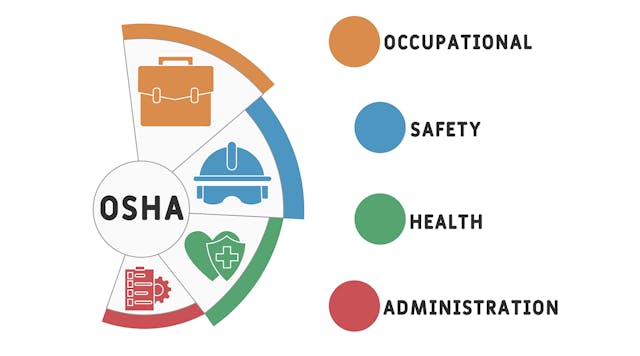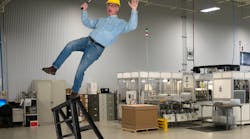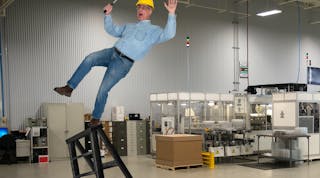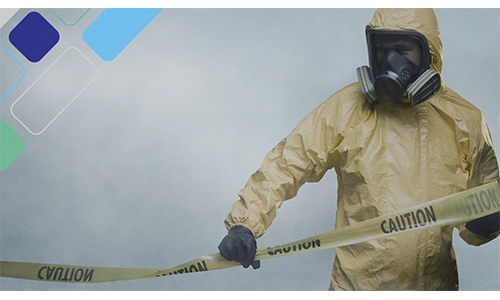Most of the time, conversations about workplace safety center around topics like reducing slips, trips and falls or improving total worker health. But there’s another topic we don’t always talk about, and we might not like to think about, either: workplace violence.
But in order to keep workers safe, we have to confront the grim possibility of workplace violence. Unfortunately, statistics show that violence against workers has been on the increase for the past several years, and it seems—at least anecdotally—to have skyrocketed increased since the start of the COVID-19 pandemic.
EHS Today spoke Kenna Carlsen, research associate at the National Safety Council about the worrisome trend and what factors can contribute to workplace violence. She will also speak about potential safety technologies that can help prevent, mitigate or otherwise aid in response to potential workplace violence.
Carlsen will speak at the 2022 Safety Leadership Conference, being held in Cleveland from Oct. 18-20. Below is a preview of what to expect from her presentation.
Carlsen: We are still awaiting the 2021 Bureau of Labor Statistics data to give us a better idea of the long-term impact of COVID-19, but preliminary evidence shows that workplace violence increased, especially in health care, retail and other industries deemed essential.
In 2020, the rate of workplace violence increased from 2.0 assaults per 1,000 workers to 2.1 assaults. In fact, at least 400 incidents were reported in the media between March 1 and Oct. 31, 2020, alone.
How do the past few years compare to historical data? Is this something new or have incidents of workplace violence been increasing for a while?
In general, workplace violence has been on the decline since the 1990’s. However, that number began to rise again in the past decade and was exacerbated by COVID. Workplace violence is not a new phenomenon by any means, but it has begun garnering more and more attention, especially given the rise in mass violence from the 2010s to now.
What do we know about the reasons why workplace violence occurs in the first place?
While human behavior is notoriously difficult to predict, decades of research have demonstrated the link between prevalence rates and risk factors at the environmental, occupational and organizational levels. These reasons can [include] an unhealthy or unsafe company culture, occupations requiring cash handling and working with high-risk individuals. We [at the National Safety Council] outline these risk factors in our report and playbook.
What effect does a culture of safety have on workplace violence?
Culture plays a huge role in preventing workplace violence. A company that cultivates a culture built on mutual respect and trust not only reduces their risk of violence but also empowers employees to come forward with their own safety concerns and contribute to conversations around potential solutions. Just like any strong health and safety plan, a strong violence prevention plan involves a top-down commitment and an ongoing and open discussion at all levels of employment.
How or where does technology fit in the mix?
Hazard prevention and control is an essential building block to any successful workplace violence prevention program. There are a wide variety of technological solutions that, combined with a written policy and employee training, can help prevent, mitigate and/or respond to potential violence.
What about violence at the workplace keeps you up at night (at least metaphorically)?
Workplace violence is notoriously underreported. According to a report from the U.S. House of Representatives, workers may be suffering as many as three times the amount of injuries and illnesses than officially reported (U.S. House, 2008). Simply too many workers are suffering in silence and might not have access to medical and mental health resources necessary to overcome a traumatic event like assault or abuse.
If safety professionals wanted to start taking action tomorrow, what would you recommend?
The National Safety Council’s Work to Zero initiative just released a free report and playbook for addressing workplace violence. This report explores the five building blocks of an effective prevention plan and specific steps your company can take to address workplace violence. It also examines 10 technologies that can help companies prevent, mitigate and react to incidents.
What's one thing you hope attendees take away from your session at the Safety Leadership Conference?
I hope attendees begin to see workplace violence through the same lens as other occupational hazards. The main message I want to get across is that while workplace violence is a complicated issue, there are steps that can be taken to make your organization better prepared to tackle it.




















































































